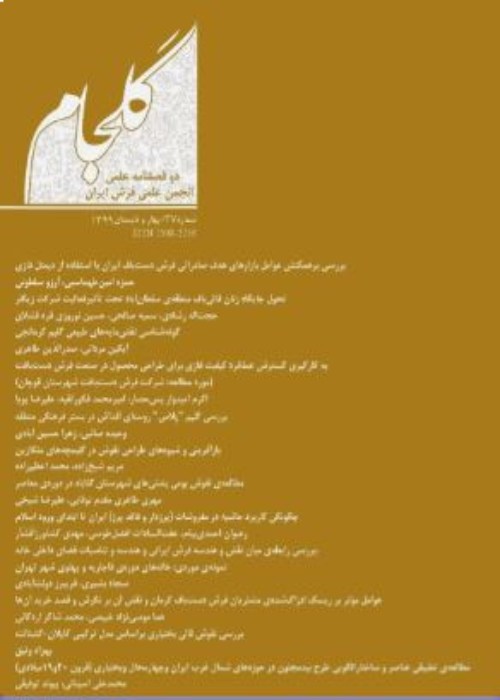Ways of Using Borders in Iranian Carpets (piled and flatwave) until the Beginning of Islam
The border in Iranian carpets is an embossed and decorative frame embedded around the weaving. The presence and necessity of using borders in the sales of different historical periods is a noteworthy point through which the independence of the structural elements in the most basic sales can be identified. By examining the existence of borders and their quality in the products belonging to the pre-Islamic periods, we can consider answering the following two questions:What are the relationships between the motifs components, dimensions and size of the borders and the context of the studied carpets? What is the position of the borders in the oldest examples, especially the tied piled samples?The collection of information in the present study is based on library data and the research benefits from a descriptive-analytical method. By studying various resources such as written documents, image of carpets reflected in other arts, and examining a few of the surviving handwoven fragments, the existence of borders in examples (piled and flatwave) belonging to pre-Islamic periods was recorded. The proportions between the border and the context of the carpets (piled) was examined in terms of type of motifs, size and proportions in proportion with the context. The research population in this study is pre-Islamic weavings that can be studied are 6 samples piled and flatwave. Pazyryk carpet, as the oldest example, has a visual relationship and full coordination of the role in the borders and background, and this point was reduced in the products of the Sassanid period. The dimensional proportions of the border and the background of the Pazyryk carpet are far from the principles of modern border design in the carpet, but in the Sassanid examples, these principles are more closely related to the current rules.Visual qualities in the Pazyryk carpet can point to the presence of borders in artistic productions with a doctrinal and cultural theme. But in Sassanid examples, the border is reduced to the size of a decorative frame without visual qualities.
Border , Iranian Carpet , Motif , Dimensions , Proportion
- حق عضویت دریافتی صرف حمایت از نشریات عضو و نگهداری، تکمیل و توسعه مگیران میشود.
- پرداخت حق اشتراک و دانلود مقالات اجازه بازنشر آن در سایر رسانههای چاپی و دیجیتال را به کاربر نمیدهد.



